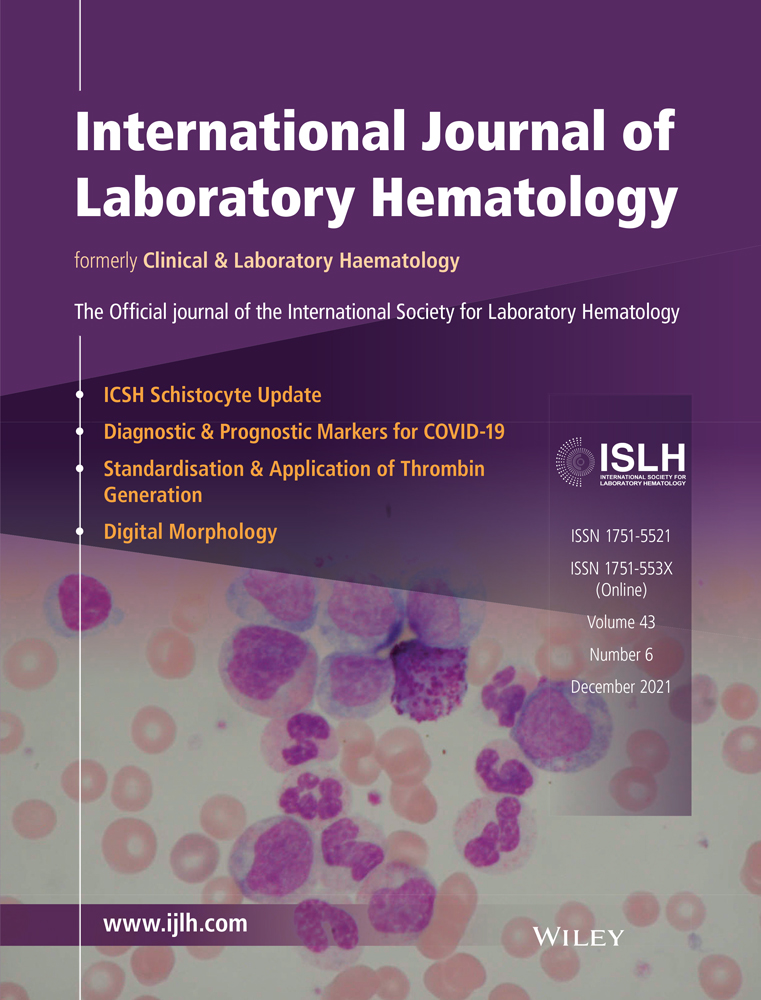GATA2 rs2335052 and GATA2 rs78245253 single-nucleotide polymorphisms in Chinese patients with acute myelocytic leukemia
Abstract
Introduction
GATA binding protein 2 (GATA2) gene, involved in progression of hematologic malignancies and various solid tumors, is a susceptibility gene for inherited acute myeloid leukemia (AML). However, the influence of its single-nucleotide polymorphisms (SNPs) on AML remains unknown.
Methods
We used allele-specific PCR to genotype GATA2 rs2335052 and rs78245253 in 159 newly diagnosed AML (non-M3) patients and 300 healthy volunteers, and all of participants came from China. And 34 common hematological tumor gene mutations in 159 AML patients were detected by next-generation sequencing. Kaplan-Meier survival analysis and Cox proportional hazard regression were used to analyze the association between the two SNPs and the prognosis of AML.
Results
We found GATA2 rs2335052 C/T genotype, rs2335052 T/T genotype and rs78245253 G/C genotype in 51.6%, 13.8% and 11.3% AML patients. Our results demonstrated that GATA2 rs2335052 and rs78245253 were associated with certain laboratory features in AML patients, which had no effect on the pathogeny, chemotherapy response and recurrence of patients. Nevertheless, Kaplan-Meier survival analysis showed that, compared with rs78245253 G/G genotype, rs78245253 G/C genotype was significantly related to a decrease in overall survival (OS) (P = .020). Additionally, multivariate cox regression analysis showed that GATA2 rs78245253 was an independent risk factor for OS of AML patients in China.
Conclusion
GATA2 rs78245253 was an independent predictor for prognosis of AML patients in China and may be used as a potential indicator to predict the survival of AML patients in China. Further studies are needed to validate these findings and clarify the underlying mechanism.
CONFLICT OF INTEREST
The authors declare no conflict of interest.
Open Research
DATA AVAILABILITY STATEMENT
The data that support the findings of this study are available from the corresponding author upon reasonable request.




